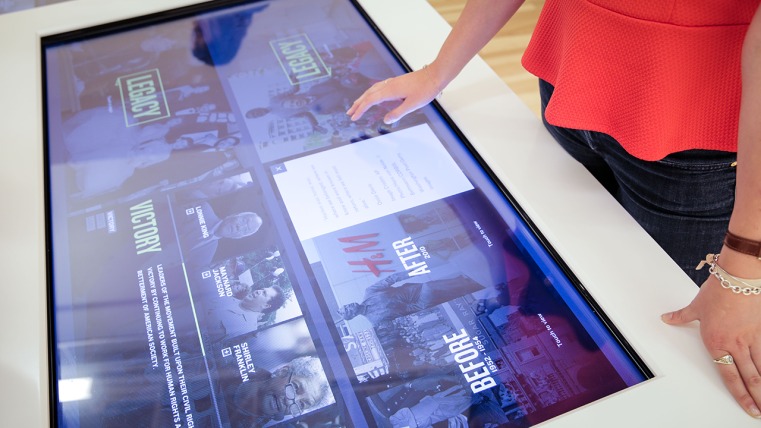Legacy Table
An interactive table considers the complicated legacy of the Civil Rights Movement in the U.S.
The American cultural landscape saw sweeping changes in the 1950s and ‘60s as the fight to end segregation and racial discrimination intensified. Although the Civil Rights Movement made great strides in advancing equality, much still remains to be done. Divided into three themes, the multi-touch, multi-user Legacy table examines how far we’ve come and how far we still have to go.
Many of the Movement’s leaders—among them longtime Congressman John Lewis, celebrated author and activist Constance Curry, and Shirley Franklin, Atlanta’s first female mayor—championed human rights causes after the Movement ended in 1968. Their important accomplishments later in life are honored in the “Victory” area of the table. In the “Hate” section, users learn about the intolerance that persists despite the Movement’s successes, reading about recent bias crimes committed against Muslims, gays, immigrants, and the homeless, among others. Finally, the “Loss” portion of the table looks at some of our country’s most vibrant African American communities both before and after the Movement, acknowledging that change, no matter how positive, can sometimes take an unexpected toll.





